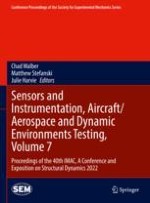2023 | OriginalPaper | Chapter
10. Modal Correlation of Complex Aerospace Joints Using Automated Variable Substitution
Authors : James P. Winkel, Peter A. Kerrian, Theodore J. Bartkowicz
Published in: Sensors and Instrumentation, Aircraft/Aerospace and Dynamic Environments Testing, Volume 7
Publisher: Springer International Publishing
Activate our intelligent search to find suitable subject content or patents.
Select sections of text to find matching patents with Artificial Intelligence. powered by
Select sections of text to find additional relevant content using AI-assisted search. powered by
